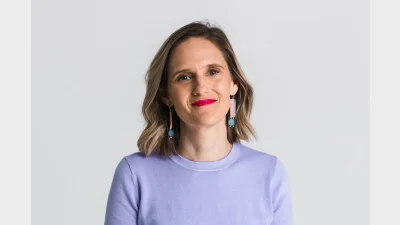The great super fund CEO reshuffle



Multiple super funds are in the process of recruiting a new chief executive as consolidation causes a dramatic decline in the number of C-suite roles.
In September, Bernard Reilly announced he will be leaving the $250 billion super fund Australian Retirement Trust, just weeks after winning the FEAL Executive Leader of the Year award. Reilly was appointed to lead ART in March 2021 and the fund was formed in February 2022 from the merger of QSuper and Sunsuper.
He was previously CEO at Sunsuper from 2019.
This was followed by Lachlan Baird announcing at the end of October that he will be leaving Prime Super after 18 years. Remo Memmolo will take up the role on an interim basis.
In the retail space, Renato Mota will leave Insignia in February after six years as chief executive.
They join two other super leaders who stepped down earlier in the year, but where their roles remain vacant or filled only on a temporary basis.
Earlier this year, head of Vanguard Super, Michael Lovett, announced he was departing just three months after the firm launched its first super offering. The fund was handed over to Shannon Nutter, but she also stepped back in July 2023 and it is now managed by Renae Smith in her capacity as chief of Vanguard Personal Investor, meaning it no longer has a dedicated Super head.
Over in South Australia, Dascia Bennett announced she will be stepping down as CEO of Super SA in August after five years and has been temporarily replaced by Patrick McAvaney until a replacement is found.
It is not just super funds either, super association The Association of Superannuation Funds Australia (ASFA) announced its CEO Martin Fahy was stepping down after seven years. His role has been taken up by Leeanne Turner on an interim basis.
Matt McGilton, managing director at Kaizen Recruitment, said: “Sometimes, [these executives] come in with the agenda of growth and change, and then they deliver on that, and move on. Sometimes it’s a board decision to say, ‘You’ve done an amazing job, it’s just time for renewal’.
“Everything is unique on circumstances, I don’t think any of these have been performance-related.”
John Myers, founding director of consulting firm perple, said CEOs were usually appointed specifically for fixed terms.
“They may only have been appointed for a certain term and when that is up for expiry, they either get told to leave, maybe for strategic reasons, or they may decide themselves that they don’t want to sign on for another few years and want to do something else,” Myers said.
Next moves
When it comes to their next moves, some CEOs may transition to non-executive director roles, where they’ll build up a portfolio of advisory and non-executive director gigs, while others may seek similar roles.
However, both Myers and McGilton warned it can be difficult to move from one executive role to a subsequent one as they are competitive roles.
“It can be very challenging to find another C-level executive role for a couple of reasons. Number one, they just don’t come up that often. When they do, they’re hotly contested and typically, they might want to go for a younger or up-and-coming candidate,” Myers said.
“Some of them transition to non-executive director roles where they’ll build up a portfolio of advisory and non-executive director gigs, and that can be really fulfilling. So they’re engaged to use their holistic and complete experience to help.”
Myers said the consolidation meant that top jobs at super funds had “dramatically declined” more recently and super fund CEOs tended to stay within a certain banding of fund size remuneration-wise, moving sideways between the funds rather than upwards.
“You aren’t going to see someone from a small fund move up to ART, it just isn’t going to happen,” Myers said.
It was also unusual to see someone from a profit-to-member fund move across to a retail super fund or back into an investment firm, he said.
He also highlighted more funds are opting to have a CEO and a deputy CEO.
“In some cases, this is for succession planning purposes and for others, the new CEO may have come from a specialist role so [needs help] on the other leadership activities,” Myers said.
He gave the example of Cbus, where chief investment officer Kristian Fok was promoted to CEO and Marianne Walker is deputy CEO and at NGS Super, where Natalie Previtera moved from chief risk officer to CEO so later appointed Ben Facer as her deputy CEO.
In the case of ART’s deputy chief investment officer Charles Woodhouse, he moved to take a senior role at Abu Dhabi Pension Fund. Other funds are opening offices in the US and Europe and there may be roles there for them to lead if they wish to leave Australia for a new opportunity or return back to their home country.
“I’ve seen a number of Australian investment professionals consider that as an option at all levels. I’d think it’s a stage of life, to say, ‘Look this is potentially tax-free money, I would want to do it for a couple of years’,” McGilton said.
Recommended for you
From government consultations to ASIC reviews, Super Review has put together a timeline of how super funds’ handling of member complaints has grown in prominence in the last 12 months.
Speaking to Super Review, Christina Hobbs shares why the superannuation industry needs to better service female members and how Verve Super implements an ethical investment approach.
In an interview with Super Review, Vision Super chief executive Stephen Rowe has shared his thoughts on the Active Super merger and the challenge of keeping up with ever-changing regulation.
As the line between traditional funds management and superannuation increasingly blurs thanks to internalisation, Australia’s investment professionals are finding a larger pool of opportunities than ever before.













